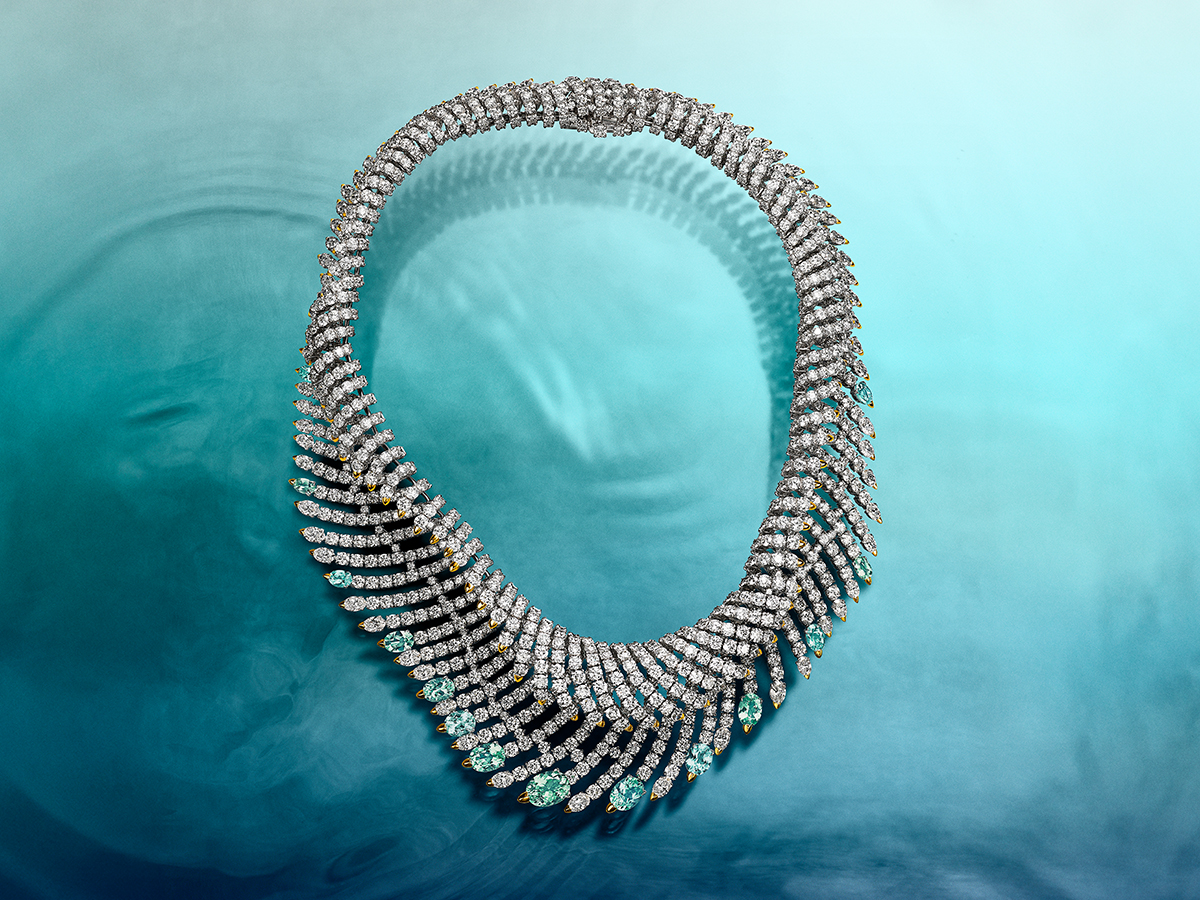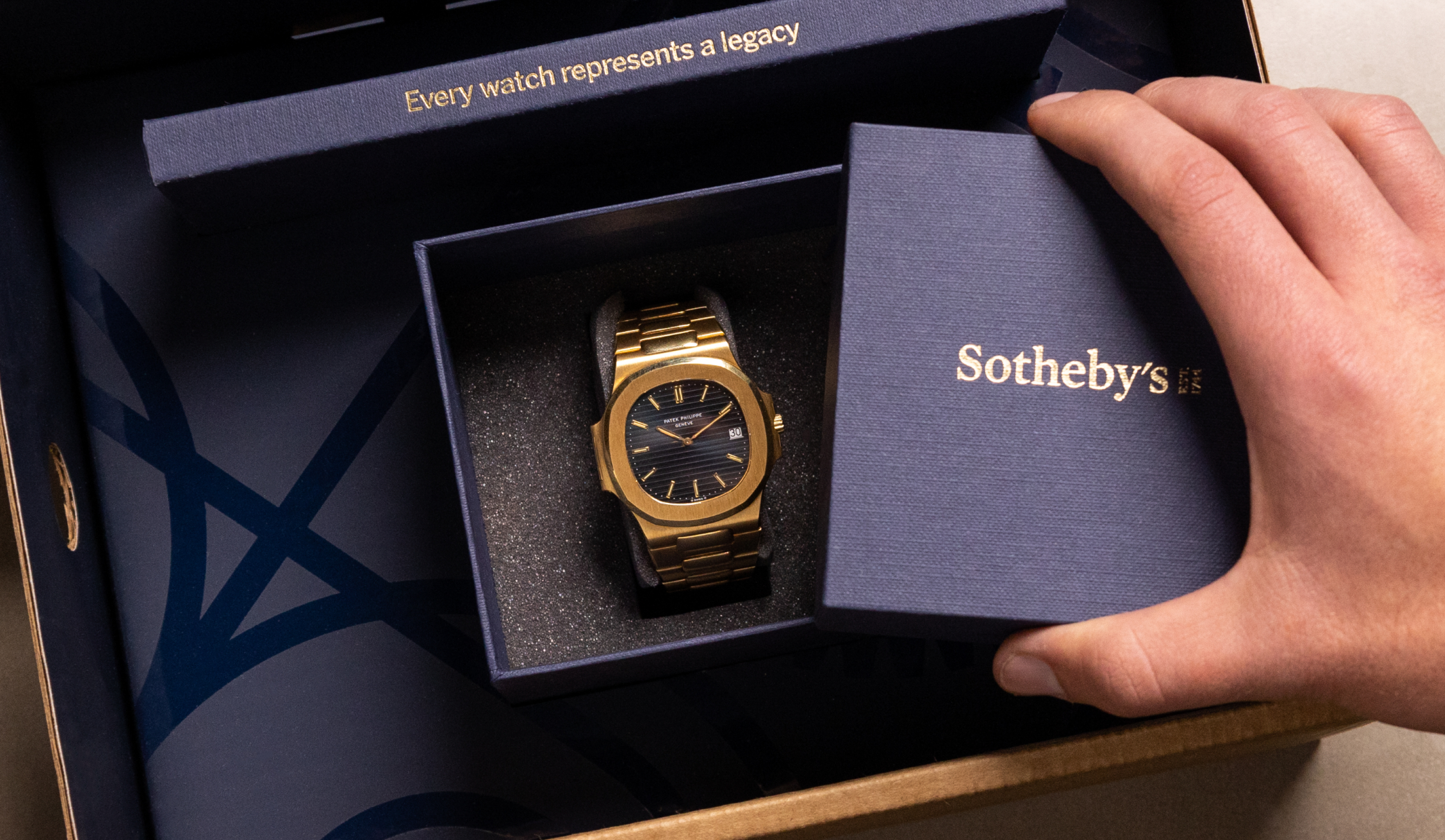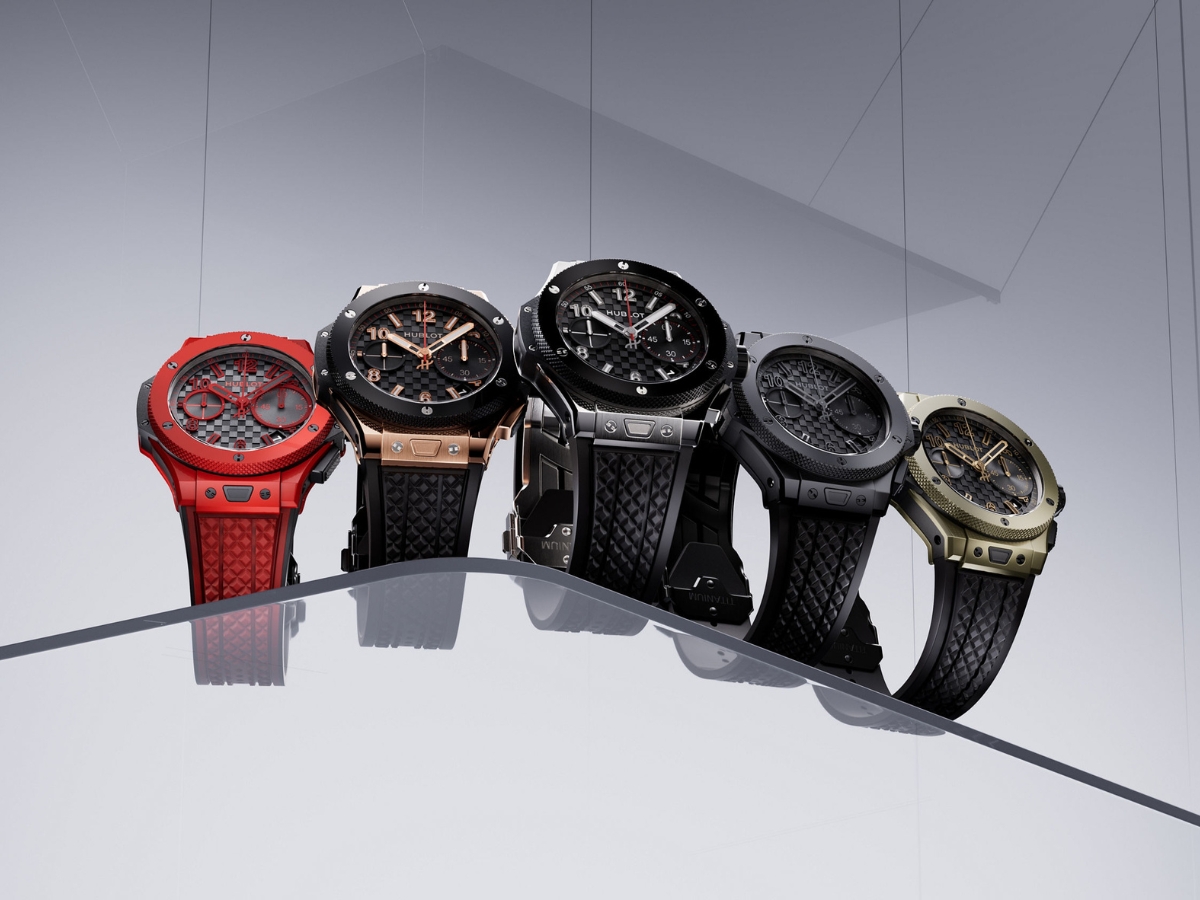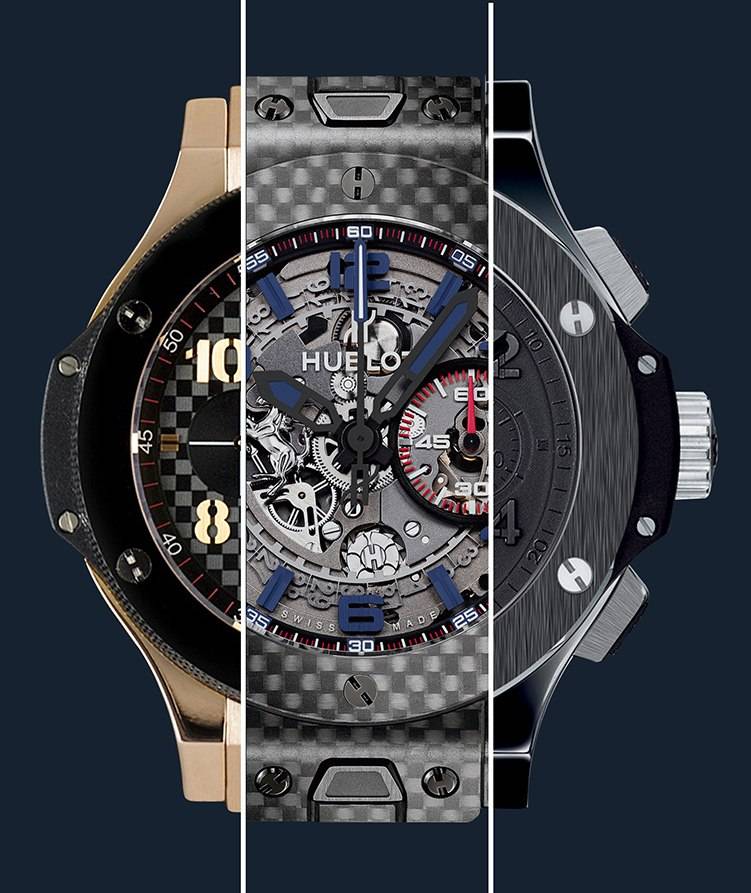
Retrospective: Hublot Celebrates 10 Years Of The Big Bang Watch

When Carlo Crocco was contemplating the birth of Hublot in the late 1970s, he had a very clear vision of how his watch should look. From the porthole-shaped case, to which the brand thanks its French name, to the black dial, it was all in his mind. All but the strap. He considered many materials, but rejected them all. In his design, the strap was drawn as a solid black strip, simply because no decision had been made as to what material it should actually be. Crocco liked the look of it and made a decision that would result into one of the founding hallmarks of the brand: he went for a rubber strap. Although rubber as a strap material was not entirely unheard of in those days, it was still a very unusual material to use for a watch crafted from precious metal. As simple as the strap may have looked, so difficult was it to actually produce. The entire development process took two years by itself, requiring the world’s leading experts in vulcanization. Crocco was, however, determined to fulfill his vision; and in 1980, Hublot was officially launched.
This very rubber strap marked the beginning of the ‘Art of Fusion’ in two ways: first, through the unusual combination of materials, 18K yellow gold combined with natural rubber. But also—in a more literal sense—the theoretical art of fusion was there. In order to connect the strap securely to the watch and folding clasp, little metal bars where literally fused within the rubber strap to provide extra support for the screws. Through a highly-complex and unique process, the metal and rubber converged, literally becoming almost one. It was this fundamental mechanism that made the Art of Fusion possible in the first place.
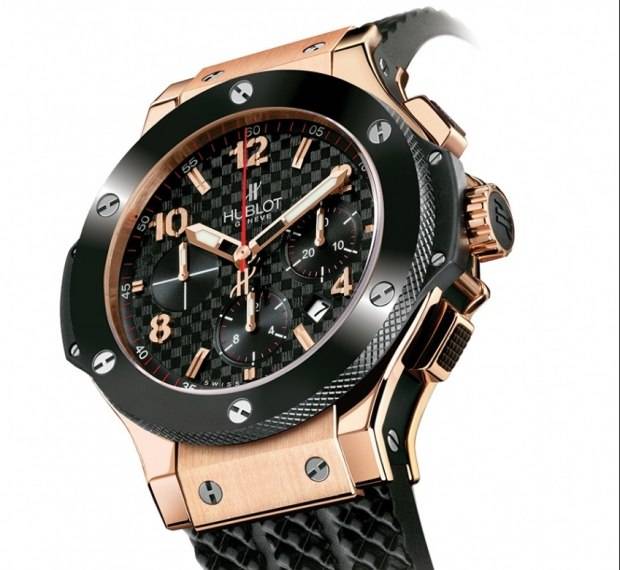
When Jean-Claude Biver joined Hublot in 2004, it was his mission to bring the brand to a new level, creating a second chapter in its history. Biver decided to do this by going back to Hublot’s roots, represented by its signature case and unusual rubber strap pairing, seeking to coin the renaissance of the art of fusion. Joining him for the endeavor was Ricardo Guadalupe, now Hublot’s CEO, with whom he worked closely together at Blancpain in the 1990s and early years of 2000. To effectively take the Art of Fusion to the next level, Biver also had a vision; and thus, he started to order parts from various suppliers to execute that vision. He did this under his own name, and since none of the suppliers knew it was for Hublot, the grapevine was soon buzzing with rumors that Biver was starting his own brand. When Biver finally revealed the new Hublot at Baselworld 2005, Big Bang forged a whole new meaning.
With the Big Bang, Hublot created a new universe. True to the same concept as the first Hublot 25 years prior, it was a combination of unusual materials presented in a bold way. Very recognizable as a Hublot—yet at the same time refreshingly different—the concept of evolution through revolution materialized. The niche brand was thrust into the spotlight with the Big Bang, awarded the prize for Best Design at the prestigious Grand Prix d’Horlogerie de Genève—and their orders tripled.
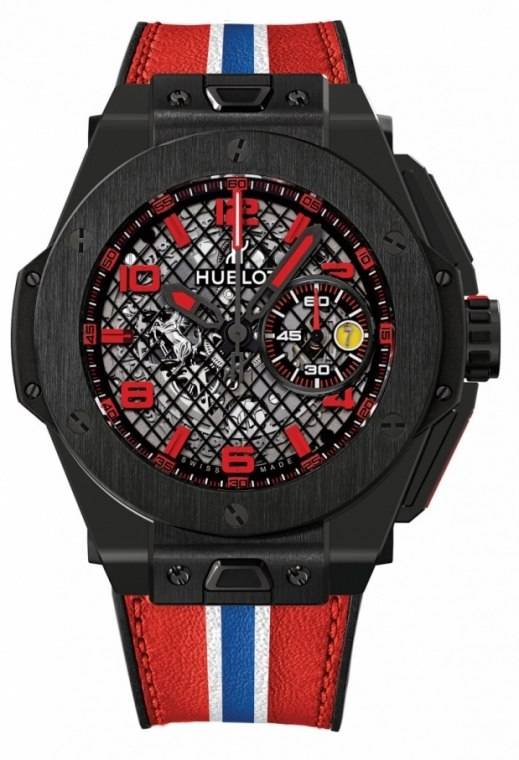
Biver and Guadalupe had created momentum for the brand, yet were also the best candidates to use this momentum to elevate the brand even further. They expanded the Big Bang collection, introduced new innovative materials, as well as several complications. By 2007, the workforce of Hublot had doubled and the start of a new manufacture was initiated.
With Baselworld 2015 around the corner, ten years had passed since the initial introduction of the Big Bang. The Hublot universe is still expanding, with the opening of an additional manufacture unit this year, opposite the current one. In taking full advantage of the momentum the Big Bang gave to Hublot, Biver and Guadalupe have further focused on two central elements: manufacture and fusion. Before Biver joined Hublot, the brand relied on several sources outside of the company to provide essential parts. In the past decade however, Hublot has focused on bringing much of that knowledge and craftsmanship into its own organization, with the aim of controlling around 80% of the production of their watches. This strategy has empowered the brand to consistently take the art of fusion to the next level, while continuously surprising and enticing clients with their innovative offerings.
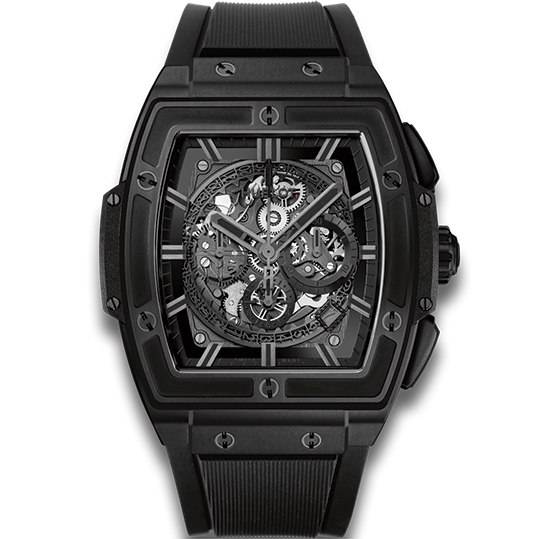
In many ways, the ‘Art of Fusion’ is a constant process of innovation: innovation in design, movement, combination of materials or even in the materials themselves. When they introduced the Mag Bang in 2007, this was not only the first Hublot made completely in-house, but that also featured an innovative, lightweight case, crafted from a new alloy consisting mainly of magnesium and aluminum.
With Biver, Hublot has had a tendency to call it like it is, and that could not have been more true than with “Magic Gold.” Created in close collaboration with the metallurgy department of the École Polytechnique Fédérale de Lausanne, Hublot was able to “fuse” 18K gold with ceramic. The result was gold that is just as precious but now far more scratch-resistant, with a hardness of around 1,000 Vickers- more than double the value of 18K gold, which hovers around 400 Vickers. When the “Magic Gold” is combined with Hublot’s in-house chronograph movement, Unico, you get the Big Bang Unico Magic Gold- perhaps not the most complicated or precious Hublot, but in many ways representative of the soul of the brand like no other watch.
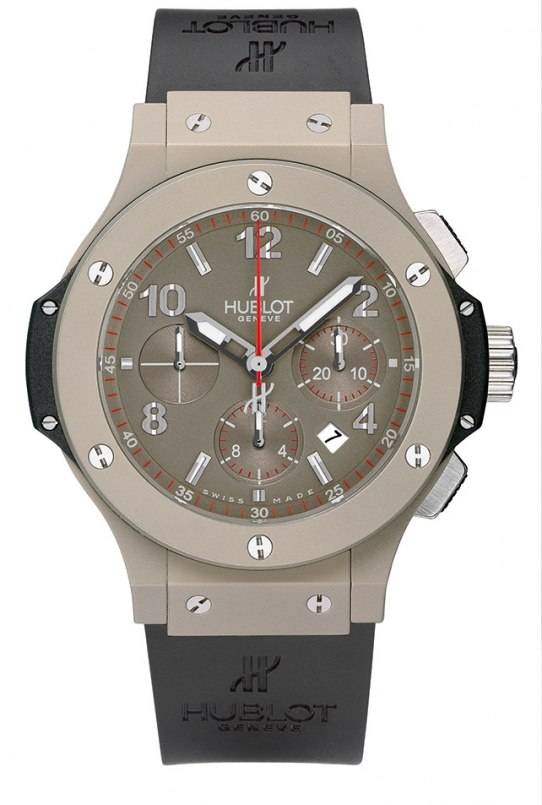
While the tenth anniversary of the Big Bang is something that Hublot will not let go unnoticed, at the same time, it has always been a brand with a focus towards the future. Don’t expect the re-introduction of vintage designs, but look forward to new interpretations of the founding principles of the brand. Take the Big Bang Broderie for example, which was launched on the first day of New York Fashion Week on the wrist of Hublot’s latest ambassador, supermodel Bar Refaeli. A fusion with fashion it is indeed, as this addition to the Big Bang ladies collection features a unique dial with an embroidered skull, in a design that also takes over the bezel and dial of the Big Bang. Here, we see that this watch is more than just fusion between materials but also the fusion between eras, combining the traditional Swiss art of embroidery with cutting-edge materials to engineer a contemporary piece.
For Hublot, the Art of Fusion is more than just the watch alone. For those customers who prefer a bracelet over a strap, Hublot has introduced the Big Bang on the Unico as part of their 10th anniversary celebration. Fully integrated with the case, it cannot only be changed in a heartbeat at the owner’s whim, but also reflects the unique nature of the watch. The design of the bracelet incorporates an external façade of titanium or King Gold, combined with a ceramic core. Hublot’s roots are also not forgotten, given the rubber details of the bracelet.
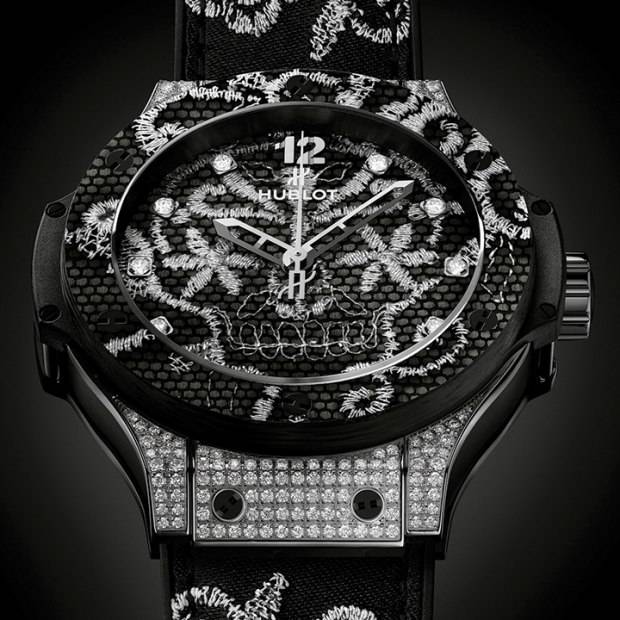
Although the Big Bang is by no means at the end of its ever-expanding universe, in 2014, Hublot did introduce the Spirit of Big Bang. Aptly-named, since the watch does indeed exude the same spirit, it is unveiled to the world by means of a unique sandwich tonneau case. Same spirit, yet a different animal, where the Big Bang is a thoroughbred sports watch, the Spirit of Big Bang seems to transcend into the realms of a contemporary dress watch, merging qualities of different types of watches into a single act of fusion. The brand has dutifully decided to celebrate the icon’s coming-of-age by collaborating with another manufacturer known for its evolutionary qualities. The luxury watch brand has just announced the release of the Hublot Big Bang Ferrari Black Ceramic for its icon’s birthday, and Guadalupe promises a few more gifts to go along during Baselwolrd 2015.
For 10 years, Big Bang has proved to be a constant force of evolution through revolution, ceaselessly expanding into new worlds, new techniques and, more often than not, to go where no watch brand has gone before.
RICARDO GUADALUPE, HUBLOT CEO
The watch is called Big Bang; what inspired you to give it this name?
It is actually an idea of Mr. Jean-Claude Biver. In 2005, at the beginning of the Big Bang, we launched a watch with a gold case and a rubber strap- this was the first time you could find them together in one piece, in the watch industry. So the name Big Bang comes from the beginning of time, where everything was unified. It was the only moment where you had rubber and gold together at the same time.
What do you consider the most defining moment in the history of the Big Bang?
For me, the most defining moment was the launch of the Big Bang Ferrari with the Magic Gold case. It represents the icon of Big Bang very well, as it is a very sporty watch with a new gold, created and patented by Hublot. It is an alloy comprised of gold and ceramic, allowing the case to be scratch-resistant. So Magic Gold is the toughest 18K gold watch in the world, still available with a rubber strap. It was also the moment in which its commercial success validated our desire to make a unique modern watch with a strong identity.
In the November issue of Hublot Magazine, Jean-Claude Biver mentioned “I had a vision for the long-term development of the brand.” Where will that vision lead Hublot in general, and the Big Bang in particular, in the next couple of years?
The clear vision for Hublot is that we need to consolidate our commercial position; yet, at the same time, be disruptive and innovative. Therefore, the challenge is to always find new ideas that will bring novelty to the market. Consequently, we are constantly working on new projects to extend the Big Bang range.
To what do you attribute the enormous success of the Big Bang?
The Big Bang accounts for 55% of our sales. Actually, the Big Bang is linked with the Hublot name like no other watch. It shocked the watch industry and focused a great deal of attention on our brand. Innovation is key to the success of this watch and for Hublot, in general. Innovation can affect different areas: the aesthetics, the materials or the movement.
How important is an in-house calibre like the Unico for the Big Bang?
The customer buying a chronograph is not the same as the one buying a three-hand watch. The first one certainly feels more concerned about the movement’s origin, so it is important to bring them one manufactured entirely by Hublot. Hublot is able to produce its own movement, and this is important today for the customers to know. Therefore, when the new manufacture in Nyon (Switzerland) is built—just next to the current one—we plan to more than double the production of our UNICO movements.
What do you consider the most important ingredient of Hublot’s Art of Fusion?
The most important ingredient is, again and again, innovation. Without innovation, we can’t create new fusions like with our Big Bang Broderie, where we have embroidery directly encapsulated on the dial and the case of the watch, which are made of carbon fiber. It is unusual to see embroidery and carbon fiber assembled together. This process is all new and exclusive to Hublot.
What is your personal favorite version of the Big Bang and why?
The Big Bang UNICO All Black that I am wearing right now because it represents Hublot well; it is the perfect fusion between the 100% manufacture movement and the iconic Big Bang design.
 SIGN UP
SIGN UP



